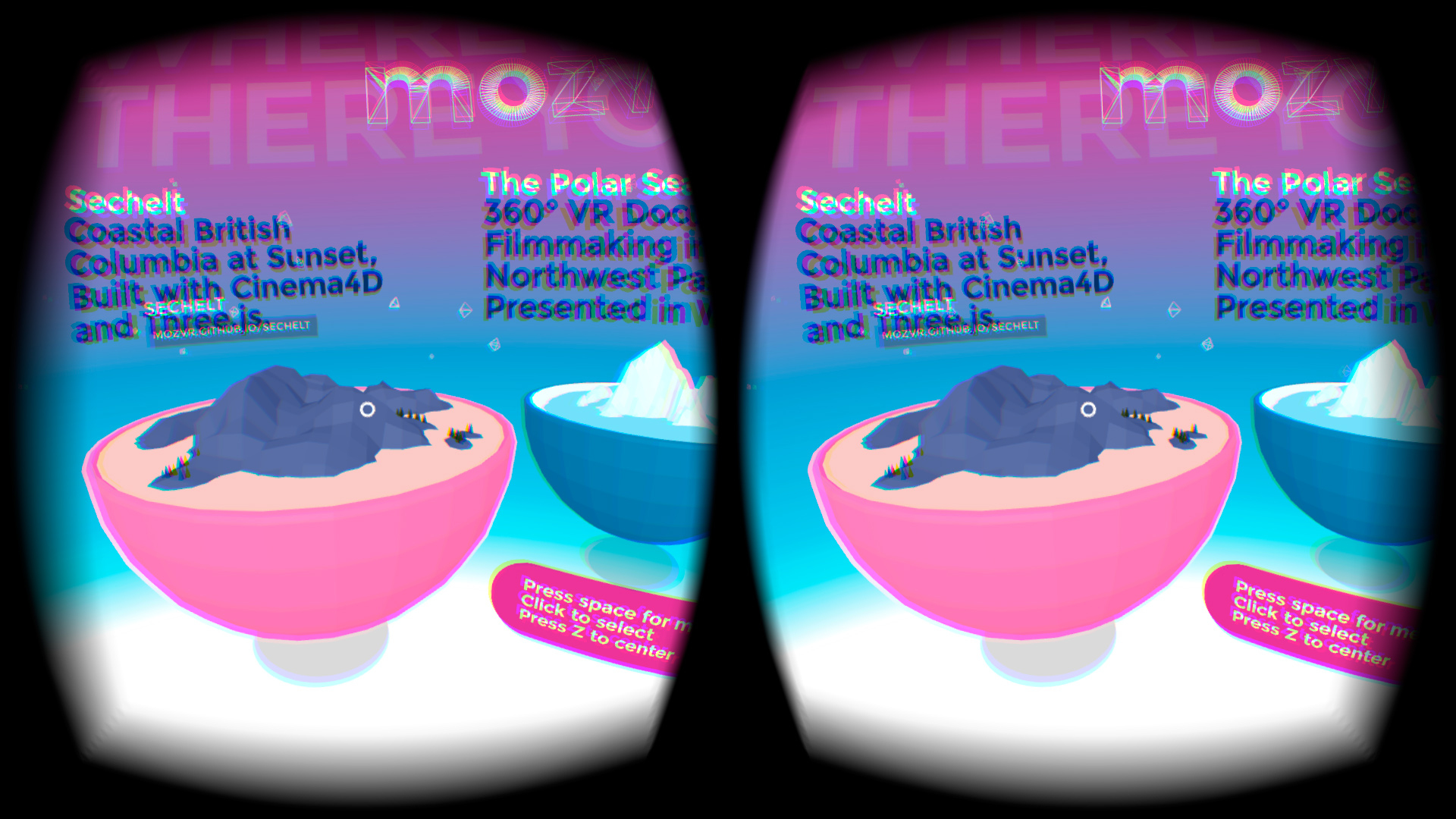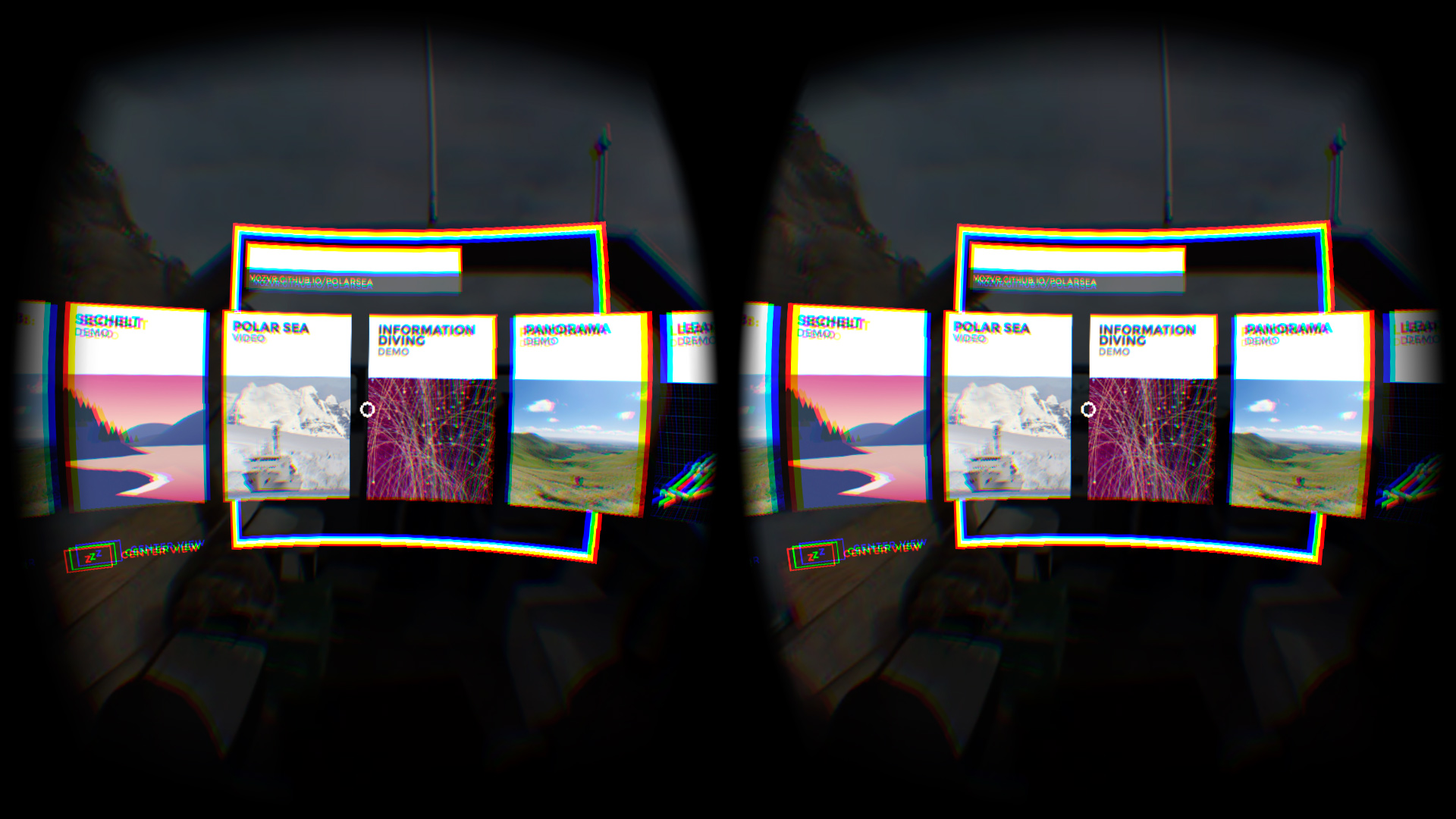A source close to the company has told UploadVR that Mozilla’s – the UK based company behind the popular Firefox browser – MozVR team is hard at work on “something” for GDC. Mozilla’s push to get content out makes sense given that they also announced today an inexpensive mobile VR headset of their own, currently priced at £29.99 ($46.23 USD). According to the Customs Today report, the HMD will support both iOS and Android devices that are 8.2 x 15.4 cm or less (3.22 x 6.06in). UPDATE: According to Vladimir Vukicevic, the Engineering Director at Mozilla, the Customs Today report was incorrect, “Mozilla is not building a virtual reality headset. We are currently exploring the potential of virtual reality on the open Web, and are shipping VR-enabled builds of Firefox Nightly. At GDC this year, we will be showcasing the latest Web VR demos from the Web development community.”
This isn’t Mozilla’s first step into what is colloquially known as ‘WebVR.’ On June 26 of last year, the company announced that it had launched “an experiential build of Firefox” with virtual reality features that enabled developers to turn any website into a virtual reality experience. The company then followed up on this announcement in November by launching MozVR.com “a VR website about VR websites” that showcases experiments from the company, resources and experiences from the development community. The site launched with a crop of five projects, ranging from 360º VR video to a demo showcasing Leap Motion integration.

Currently, MozVR is only available on the Oculus Rift DK2 but the company has plans to open it up to other platforms, like Google Cardboard in the near future. The team at Google has already been at work on mobile based web VR for it’s Cardboard project. The experiences, built for Google Chrome, work best on devices with a NFC chip built in to interface with the magnet based control system, otherwise you are simply looking around blindly. Having tested the experience on my iPhone 5s, it is far from optimized for that system now, so here’s hoping Mozilla’s efforts have better iOS support.
Web based VR promises to be a big realm for virtual reality to step into. As a society, instantaneous gratification has been the buzzphrase for a while, we want our experiences, entertainment, and information and we want them now. By allowing developers to stream experiences through a web based platform, it opens up the realm for quick and easy access to apps, which is especially helpful on mobile. It also allows for the user to save precious space, and if you are anything like me, the “storage almost full” bubble follows you like a dark cloud, so that is a huge benefit.
WebVR also has the opportunity to change the way in which we interact with data online. Imagine being able to step through ESPN.com for example, seeing massive video highlights playing on a screen to your left and a story stream to your right. Or being able to virtually travel to a company’s office, rather than their website. The possibilities are endless.
That being said, in its current state, WebVR remains… rough, however this may change as they gear up for an apparent push in the direction of VR. Perhaps we will see some more significant updates from the company come March 3rd.



























